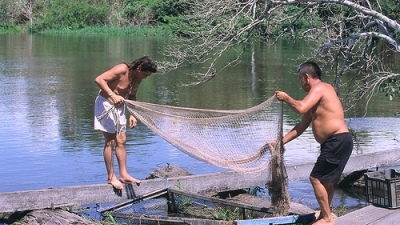43 million hectares of demarcated indigenous areas, which account for half of the indigenous lands in the Amazon, is just one of many legacies left by the Pilot Program to Conserve the Brazilian Rainforest –the largest environmental initiative ever implemented in the country.
Solid environmental policies, participation of the civil society, fresh knowledge about the Brazilian rainforests, and lessons applied to several projects that followed suit were other contributions left by the initiative, launched in 1992 during the UN’s Earth Summit in Rio de Janeiro (Rio-92).
From the outset the Pilot Program to Conserve the Brazilian Rainforest gathered efforts and resources from the seven richest countries in the world (thus the acronym PPG7 which the initiative is best known as), Brazil’s government and society, the World Bank, and global NGOs.
Back in the 80’s and early 90’s, recalls Garo Batmanian, World Bank expert and PPG7 manager, Brazil was under international pressure. “Media published headlines such as ‘Torching the Amazon’.”
By then, Brazil’s Ministry of the Environment had just been founded, and the country lacked policies for the promotion of sustainable activities in the Amazon. Moreover, the value of the environmental services from the rainforests was barely known.
Participatory approach
The program – initially founded with US$ 428 million – was structured around four components that originated 28 projects. First and foremost, the creation of a much needed natural resources policy.
Secondly, conservation and natural resources management protected areas were established to enforce regulation over local land use.
Around 2.1 million hectares of extractive reserves were delimited accordingly, and a surveillance system warned about deforestation and degradation in the nine Amazon states.
PPG7 also comprised a science and technology component which funded Brazilian research institutes, as well as 110 studies about the rainforest ecosystems.
The fourth component encouraged innovative projects to promote sustainable development in Amazonian communities. As a result, concrete support was given to 30,000 families and 70,000 producers.

